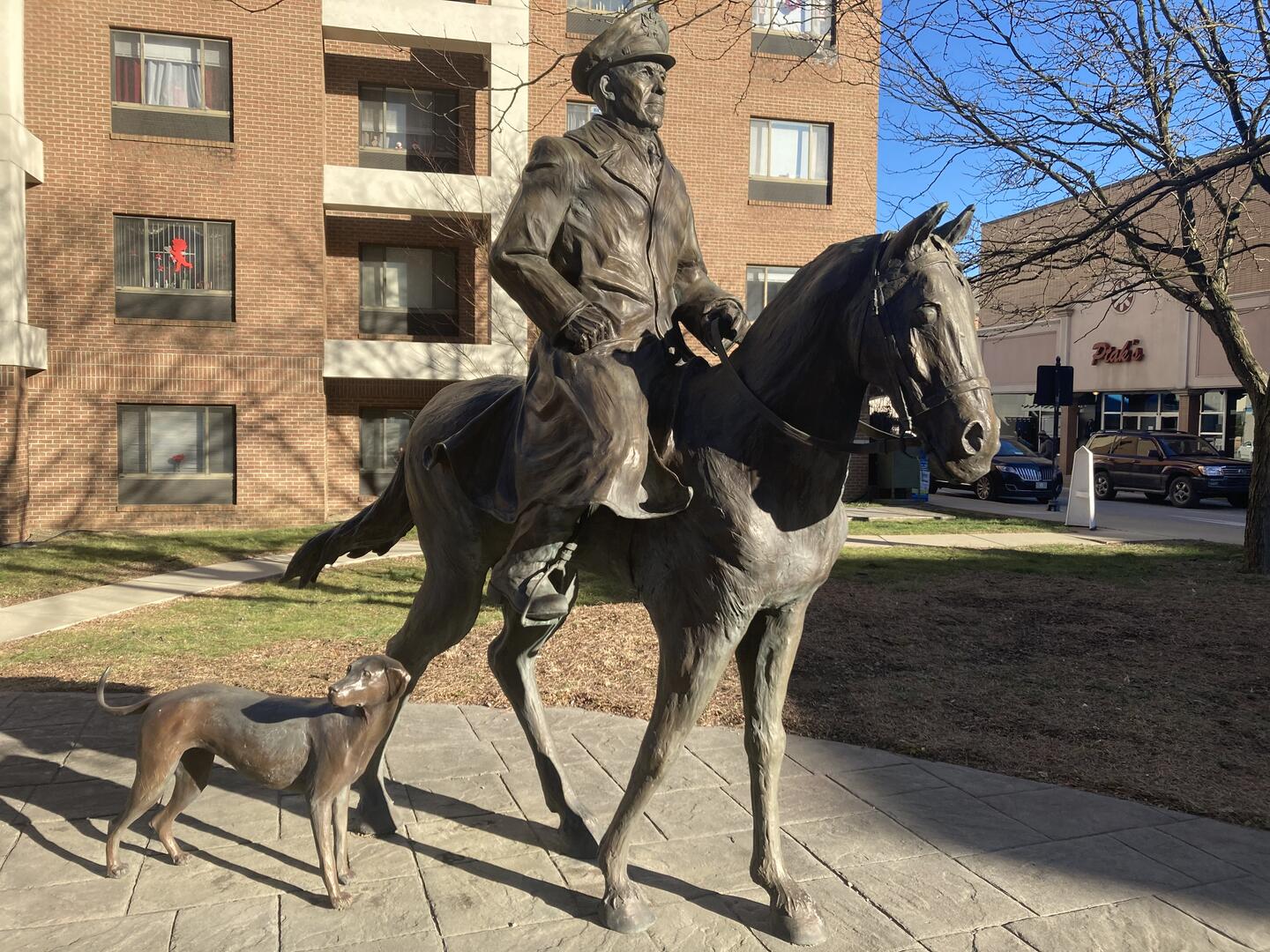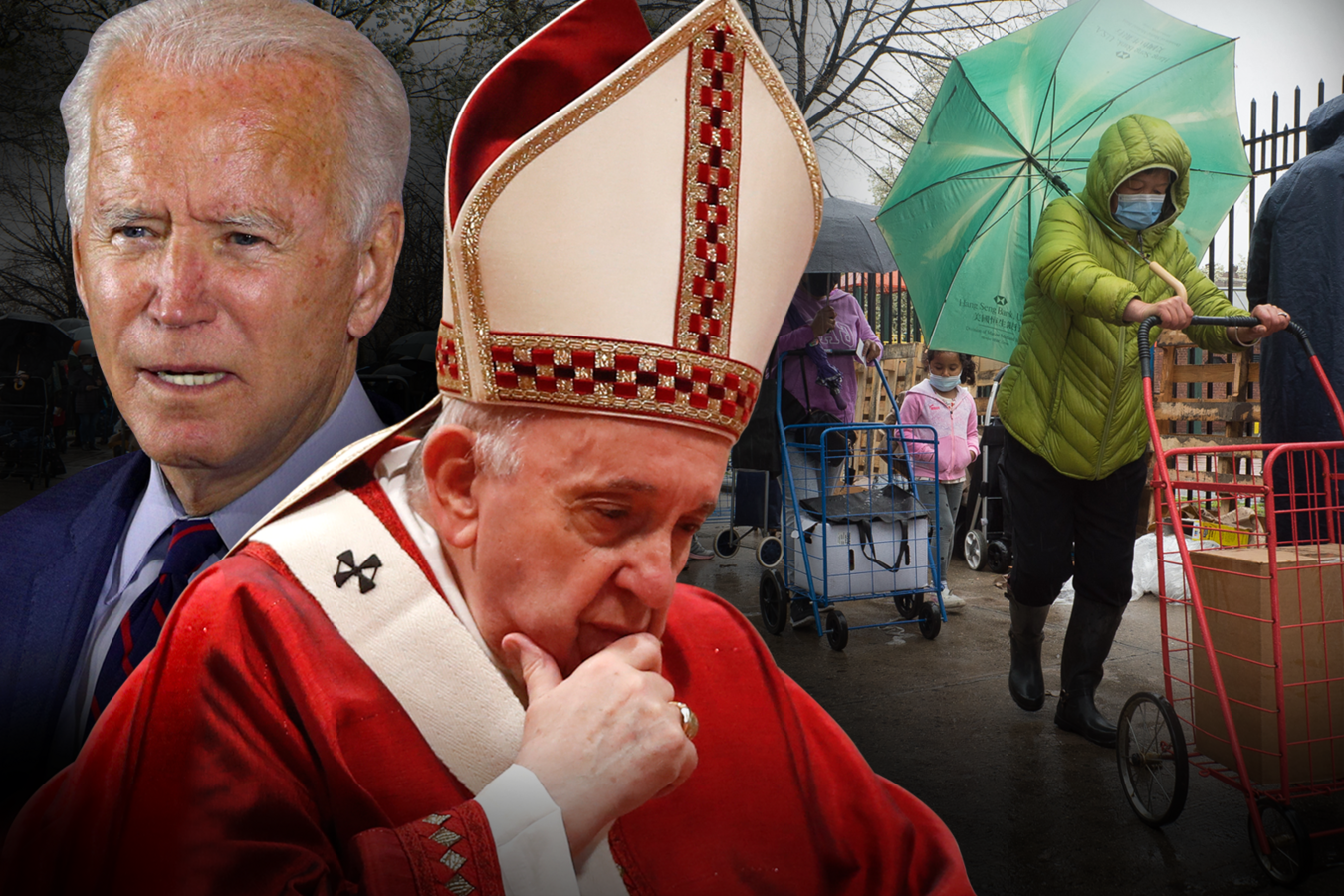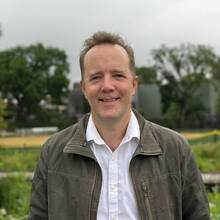Editor's Note: The Moral Economy is a new series that tackles key economic topics through the prism of Catholic social teaching and its care for the dignity of every person. This is the fifth article in the series.
As the United States recovers from the Covid-19 pandemic, another type of disease threatens.
The nation’s estimated poverty rate in March, 11.7 percent, was the highest since the start of the pandemic. The benefits of stimulus payments and other government aid are fading. “The floodgates are about to open” and more people are expected to seek shelter, food and other kinds of help, said Dan Sochko, director of development for City Mission, a nonprofit network of shelters in Uniontown, Pa.
In other words, the poorest Americans will not be able to participate in an economy expected to recover and grow at an impressive rate in 2021.
In the United States, there is almost nowhere that is not simultaneously very rich and very poor.
To better understand America’s awful and persistent poverty problem, I spent two days in Uniontown, a former industrial community of 10,000 an hour south of my home in Pittsburgh. It is in Fayette County, one of the poorest in the state. In 2019, the poverty rate was 26 percent and the median household income for 2015-2019 was $31,150, compared to 10.5 percent and $62,843 for the country.
Uniontown, established on July 4, 1776, birthplace of the Big Mac and home to General George C. Marshall, is a microcosm of American poverty. It suffers from high degrees of segregation, income inequality, low-wage service work as the dominant form of employment, pollution from heavy industry, drug abuse and a lack of public transportation and other public infrastructure.

What shocked me the most during my visit was the level of inequality. We tend to think of poverty in the United States as defined by class, race and geography—and Uniontown, I thought while driving there on Route 51, is simply a poor place, stuck in time, abandoned by industry. But the truth is more complicated. In America, poverty and wealth, trailers and mansions, kings and paupers, are wrapped together like blood and bones. There is almost nowhere that is not simultaneously very rich and very poor.
Living at the bottom
In his latest encyclical, “Fratelli Tutti,” Pope Francis addresses this modern poverty that persists even as economic data in rich countries suggest broad, enduring prosperity. “Wealth has increased, but together with inequality,” he writes. “Poverty must always be understood and gauged in the context of the actual opportunities available in each concrete historical period.”
You might look at Uniontown and see a rusting, run-down city with no grocery stores, no big employer and no bustling streets—but miles away are suburbs with nice houses, nice cars and fancy sports fields. There is even a local billionaire: 98-year-old Joseph A. Hardy III, founder of 84 Lumber, a building materials supply company. “People who are privileged, like my family, can still have really good lives in a place like this,” said Christian James, the 25-year-old son of a doctor at the local hospital. “There’s a big divide here among the classes,” he explained. “There are doctors, hospital administrators, lawyers, finance people, real estate people, living in very nice neighborhoods, and then there are people who are really having a hard time.” The two public schools are segregated by class and race, he said.
The United States has a poverty problem that dwarfs that of almost any other wealthy economy.
“In America, poverty is everywhere,” said Colleen Shaddox, co-author with Joanne Goldblum of Broke in America: Seeing, Understanding, and Ending U.S. Poverty, a new book that summarizes the problem.
The data backs up her claim. The United States has a poverty problem that dwarfs that of almost any other wealthy economy. According to the Organization for Economic Cooperation and Development, only Costa Rica and Hungary have higher rates of inequality among its members. Around 70 percent of Americans say they have less than $1,000 in savings. Inequality has worsened: Between 1978 and 2018, C.E.O. compensation rose 940 percent, while typical worker compensation increased 12 percent. And these measures of poverty can be found in every racial group, although they disproportionately affect people of color. Almost half of people living in poverty in the United States are white, 30 percent are Black and a bit over 20 percent are Hispanic.
When you are at the bottom in America, climbing upward can appear unfathomably difficult.
In Uniontown, I met Betty Jones, a 30-year-old woman who had her first child at age 13 and now has six by four different men, three of whom are in prison. I struck up a conversation with Ms. Jones as she was walking around Uniontown with a friend, trying to pawn gold earrings she had received from her sister as a Mother’s Day gift. She was unsuccessful, she told me in a follow-up phone call. The shops would not offer the $500 price she was seeking.
‘Our response to poverty is uniquely harsh, and we don’t do anything to address the systemic roots.’
“I wish I had stayed in high school and gone to college, and not gotten pregnant when I was 13,” she told me. “But people do dumb things, I guess, and here I am, but also I love my children, very much.” She lives on $600 a month in food stamp payments and is staying with a friend, she said, while looking for a good shelter or affordable housing. Later she texted me: “Hopefully someone can help me cause at this point I’m lost, you know.”
She has sought help with the Fayette County chapter of the Society of St. Vincent de Paul, whose volunteers administer $500,000 a year in donations of everything from hotel rooms to diapers. But that assistance is limited and not permanent. Financial stress, said Darren Scruggs, the chapter’s director, “is a killer and leads a lot of people in the wrong direction.” Mr. Scruggs is a former engineer who left technical work to help people and assumed the job of director of the chapter last October. “Ultimately, we want people to get back on their feet and be self-sufficient,” he said.
“There is poverty everywhere, but in most of the other developed, wealthy countries there is universal health care and some form of guaranteed income,” said Joanne Goldblum, co-author of Broke in America and co-founder of the National Diaper Bank Network, which gives diapers, tampons and other essentials to families. “Our response to poverty is uniquely harsh, and we don’t do anything to address the systemic roots.”
The need for a safety net
Almost every person struggling with poverty in America faces low wages or a lack of resources to help with rearing children. The poverty rate in the United States is 25 percent for single mothers, compared with 4.7 percent for married couples, which is why the debate over reforming child care is so crucial. “Other countries have social safety nets,” as the sociologist Jessica Calarco put it. “The U.S. has women.”
As they fight back, people often drift in and out of poverty, as Linda Midgett shows in her excellent 2012 documentary “The Line.” Their path out, however, is often blocked by structural obstacles, like low wages and company-friendly labor laws, punishing health care prices and unreliable public transit.
“Better transportation would give people better options to find better jobs,” said Barb Doty, 53, who is recovering from addiction to alcohol while working as a nursing home aide for $9 an hour. She does not have a car, and sometimes the only bus to work is late. When it does not show up, she is forced to ask for a ride from one of two aging Sisters of Charity who live with her and four other women recovering from addiction. The seven women live in Mary House, a community next to Saint Mary Nativity, a Catholic church.
Almost every person struggling with poverty in America faces low wages or a lack of resources to help with rearing children.
For Jean Augustine, S.C., the 86-year-old nun who co-founded Mary House, helping the poor is essential to her vocation. “Every single person has dignity, every person matters,” she said. “That’s what we’re trying to show here.” Living in Mary House costs $150 a month, plus $50 a month for household supplies. Mass attendance is not required, although many residents discuss spiritual matters in recovery meetings, and there are rules to follow. “I don’t like it that I have to tell one of the sisters if I’m leaving the building,” said Kelli Andrews, a 47-year-old mother of four who is recovering from pain pill addiction and is hoping to soon receive disability payments and get an apartment of her own.
“We see it as a safety thing,” Sister Jean Augustine explained. “We care about what’s happening to you.” She engages in good-natured teasing with the women. “Who likes to cook?” she asked. “See, sometimes, we have to do things we don’t like to do.”
The Covid-19 stimulus payments were a godsend for the women at Mary House, as they were for wealthier Americans. Mr. James, who has a college degree and works at a wine store in Pittsburgh, said special unemployment pay during Covid-19 boosted his income to $4,000 from $3,000 a month. “The pandemic was great for me, I got to practice the drums,” he said. “But if I’m making more money for not working, doesn’t that tell you there’s something wrong with the system?”
But the trillions in aid poured into the U.S. economy by the Trump and Biden administrations worked to keep America float. Our worst fears, triggered when we saw those lines of cars forming at food banks in the spring of 2020, did not come true.
“Every reform, and most of the solidarity I’ve seen in America has come out of a crisis,” said Thomas Massaro, S.J.
President Biden’s $1.9 trillion Covid-19 rescue plan, which enjoys wide support across the United States, includes tax credits for parents, increased unemployment benefits, help with rent, food aid and subsidies for health insurance, and it has drawn comparisons to the New Deal.
“Every reform, and most of the solidarity I’ve seen in America has come out of a crisis,” said Thomas Massaro, S.J., a theologian who studies poverty at Fordham University. “Welfare programs were deemed illegitimate in the 1990s, and now Covid has made it clear that there’s a need to help people,” he added. “But there’s still this meritocratic patina that overrides our impulse to care for other people.” In other words, many Americans believe that charity and self-made success are incompatible.
Pope Francis has made clear his outrage over modern poverty, calling it a “scandal.” But the church’s stance on poverty is more nuanced than just “feed the poor.” In “Fratelli Tutti,” Francis calls giving money to the poor a “provisional” solution. The long-term solution, he says, “should always be to allow them a dignified life through work.”
That is why Amazon’s defeat of unionization last month was such a blow. It illustrates that the United States does not have an unemployment problem: It has a wage problem, because so many companies can get away with paying workers under $15 an hour in a country where living is expensive.
The United States does not have an unemployment problem: It has a wage problem.
And economic mobility is a challenge for all racial groups. Among American children reared in the bottom 20 percent of household incomes, 10.6 percent of whites make it into the top 20 percent by the time they are in their mid-30s, compared to 25.5 percent of Asian-Americans, 7.1 percent of Hispanics and 2.5 percent of Black children.
But even in Uniontown, there are people climbing out of poverty, and there is hope to be found in stories of people chasing their dreams. One reason is that prices for homes, land and recycled industrial equipment have declined amid depopulation and deindustrialization. In the Rust Belt, if you have a good idea, you can probably afford to try it. In America, there is still space, and place, to rebuild.
The answer to structural poverty
On my second day in Uniontown, I ate a delicious steak sandwich at Mid-Towne Cafe, a small eatery owned by Mark Tengowski. He manages it with his brother Damian; both moved to Uniontown from Pittsburgh to seek treatment for alcohol abuse. “This area is economically depressed, but that means I could buy a house for $30,000,” said Mark, who also bought the restaurant building. The business is doing well, mostly thanks to takeout orders. The brothers care about quality. “I learned the steak sandwich from a guy in Philly, and he taught me the right way,” Mark explained.
In a segment of “Fratelli Tutti”titled “Starting with your own region,” Pope Francis, who has called business a “noble vocation,” writes that in places with a “a lively sense of neighborhood,” each person “quite spontaneously perceives a duty to accompany and help his or her neighbor.” In these places, he continues, “people experience a closeness marked by gratitude, solidarity and reciprocity.”
If only more people with some money lived and dined in Uniontown’s central area instead of driving around the suburbs, I thought, businesses like Mid-Towne Cafe could thrive. Locally owned restaurants and stores can alleviate poverty, and keep society more equal, by putting money in the pockets of people like Mark Tengowski instead of the faraway shareholders and owners of Subway, Dairy Queen or McDonald’s.
The answer to the structural problems of poverty cannot just be money from the government and charities. It has to be people, all of us, in relationship, changing where and how we live, and how we spend our money.
I put this idea to Mark Tengowski. “I know it’s more convenient to go to Walmart, but if you keep the money in the community, it’s better for everybody,” he said. “You just have to be aware.” And, he added, “you get better food.”
More reporting from John W. Miller:










